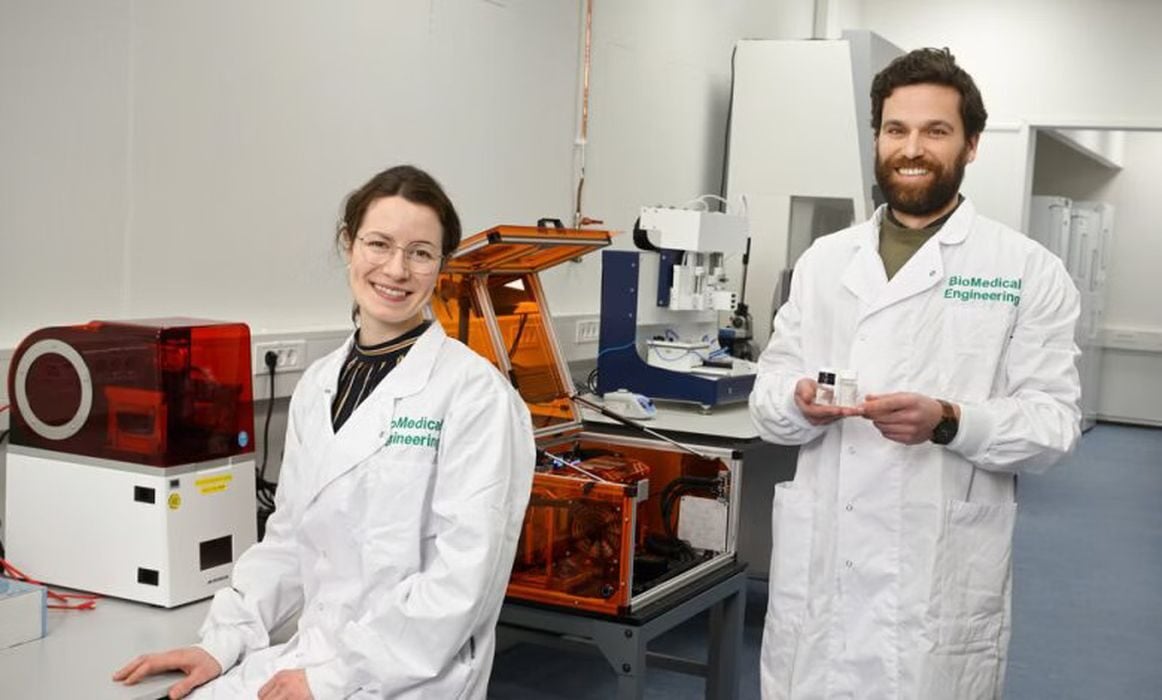
The research could lay the foundation for printing complex biological tissues, such as kidneys and muscles.
According to Eindhoven University of Technology (TU/e), Xolography, a novel light-based 3D printing technique, has been adapted to print living cells. This breakthrough could lay the foundation for printing complex biological tissues, such as kidneys and muscles. Researchers have successfully printed structures as small as 20 microns – comparable to a human cell. Their findings were published in Advanced Materials.
While the technology remains experimental, the researchers believe it represents a significant step toward future tissue engineering.
The TU/e team developed a compact, suitcase-sized prototype for Xolography-based bioprinting – a process that involves exposing a liquid polymer to intersecting light beams. Lena Stoecker, a PhD student in the Biomaterials Engineering and Biofabrication group, has led efforts to refine the method for biomedical applications. Her work focuses on developing materials and techniques that closely mimic natural cell environments – a major challenge in tissue engineering.
Unlike traditional layer-by-layer 3D printing, Xolography solidifies entire volumes simultaneously by projecting a sequence of images onto a light-reactive fluid. This approach enables faster, high-resolution printing but requires significant modifications to support living cells. The team developed biocompatible materials – replacing toxic photoinitiators to ensure safe biomedical applications.
Stoecker has successfully printed hydrogel scaffolds with pores between 100 microns and 1mm – allowing nutrient flow for cell culture. Additionally, the researchers achieved precise control over material properties by adjusting light intensity – enabling the creation of structures with varying stiffness.
A major breakthrough involved using thermally responsive hydrogels, which allowed the structures to change shape over time (aka 4D printing). This innovation paves the way for artificial muscles capable of contracting and expanding in response to temperature changes.
Read the rest of this story at VoxelMatters
